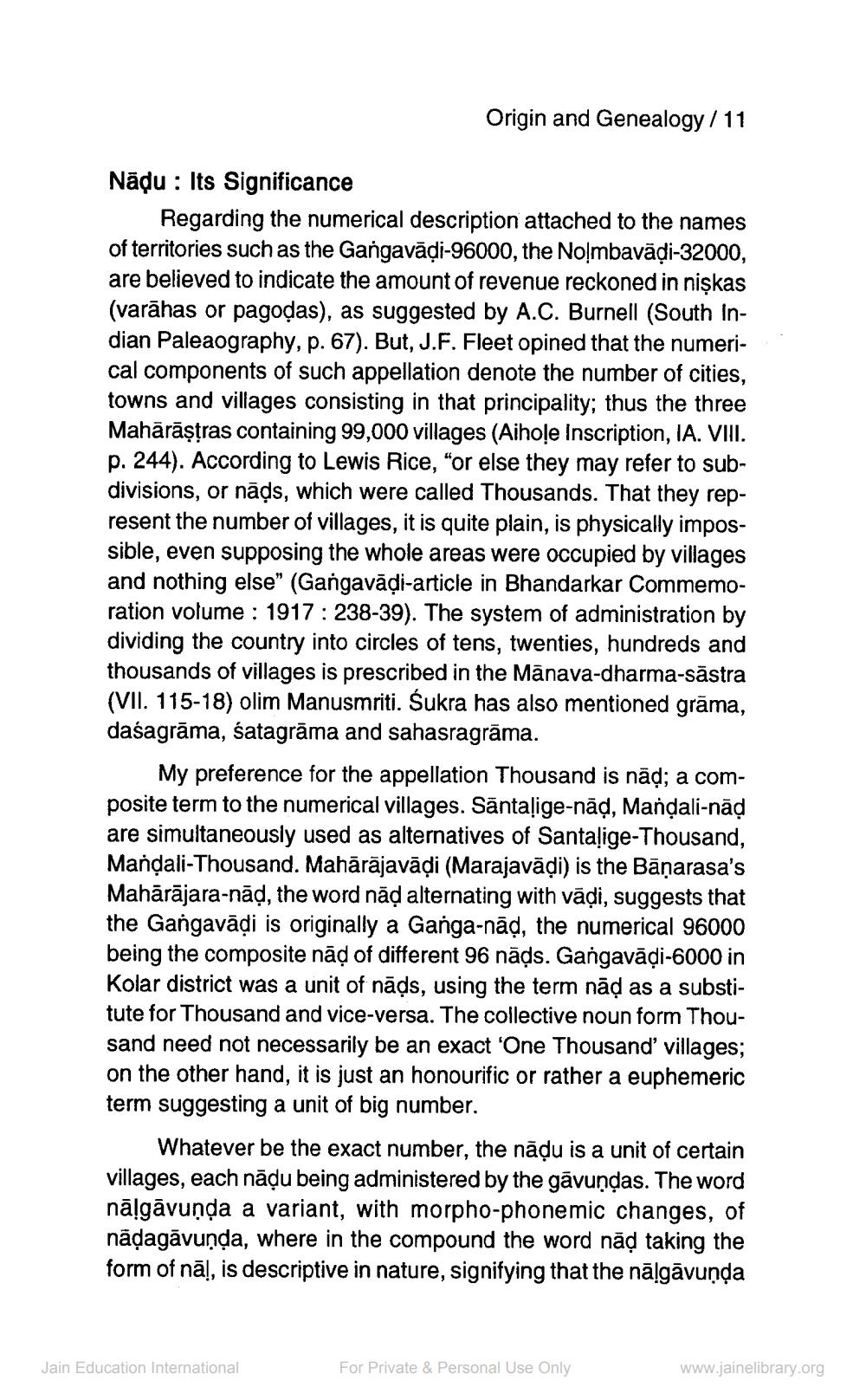________________
Origin and Genealogy / 11
Nādu : Its Significance
Regarding the numerical description attached to the names of territories such as the Gangavādi-96000, the Noļmbavāļi-32000, are believed to indicate the amount of revenue reckoned in nişkas (varāhas or pagodas), as suggested by A.C. Burnell (South Indian Paleaography, p. 67). But, J.F. Fleet opined that the numerical components of such appellation denote the number of cities, towns and villages consisting in that principality; thus the three Mahārāştras containing 99,000 villages (Aihoļe inscription, IA. VIII. p. 244). According to Lewis Rice, "or else they may refer to subdivisions, or nāds, which were called Thousands. That they represent the number of villages, it is quite plain, is physically impossible, even supposing the whole areas were occupied by villages and nothing else" (Gangavādi-article in Bhandarkar Commemoration volume : 1917: 238-39). The system of administration by dividing the country into circles of tens, twenties, hundreds and thousands of villages is prescribed in the Mānava-dharma-sāstra (VII. 115-18) olim Manusmriti. Śukra has also mentioned grāma, daśagrāma, śatagrāma and sahasragrāma.
My preference for the appellation Thousand is nād; a composite term to the numerical villages. Sāntaļige-nāạ, Mandali-nād are simultaneously used as alternatives of Santalige-Thousand, Mandali-Thousand. Mahārājavādi (Marajavāļi) is the Bāņarasa's Mahārājara-nād, the word näd alternating with vādi, suggests that the Gangavādi is originally a Ganga-nād, the numerical 96000 being the composite nād of different 96 nāds. Gangavādi-6000 in Kolar district was a unit of nāds, using the term nād as a substitute for Thousand and vice-versa. The collective noun form Thousand need not necessarily be an exact 'One Thousand' villages; on the other hand, it is just an honourific or rather a euphemeric term suggesting a unit of big number.
Whatever be the exact number, the nādu is a unit of certain villages, each nādu being administered by the gāvundas. The word nālgāvuņņa a variant, with morpho-phonemic changes, of nādagāvuņda, where in the compound the word nãd taking the form of nā!, is descriptive in nature, signifying that the nālgāvunda
Jain Education International
For Private & Personal Use Only
www.jainelibrary.org




